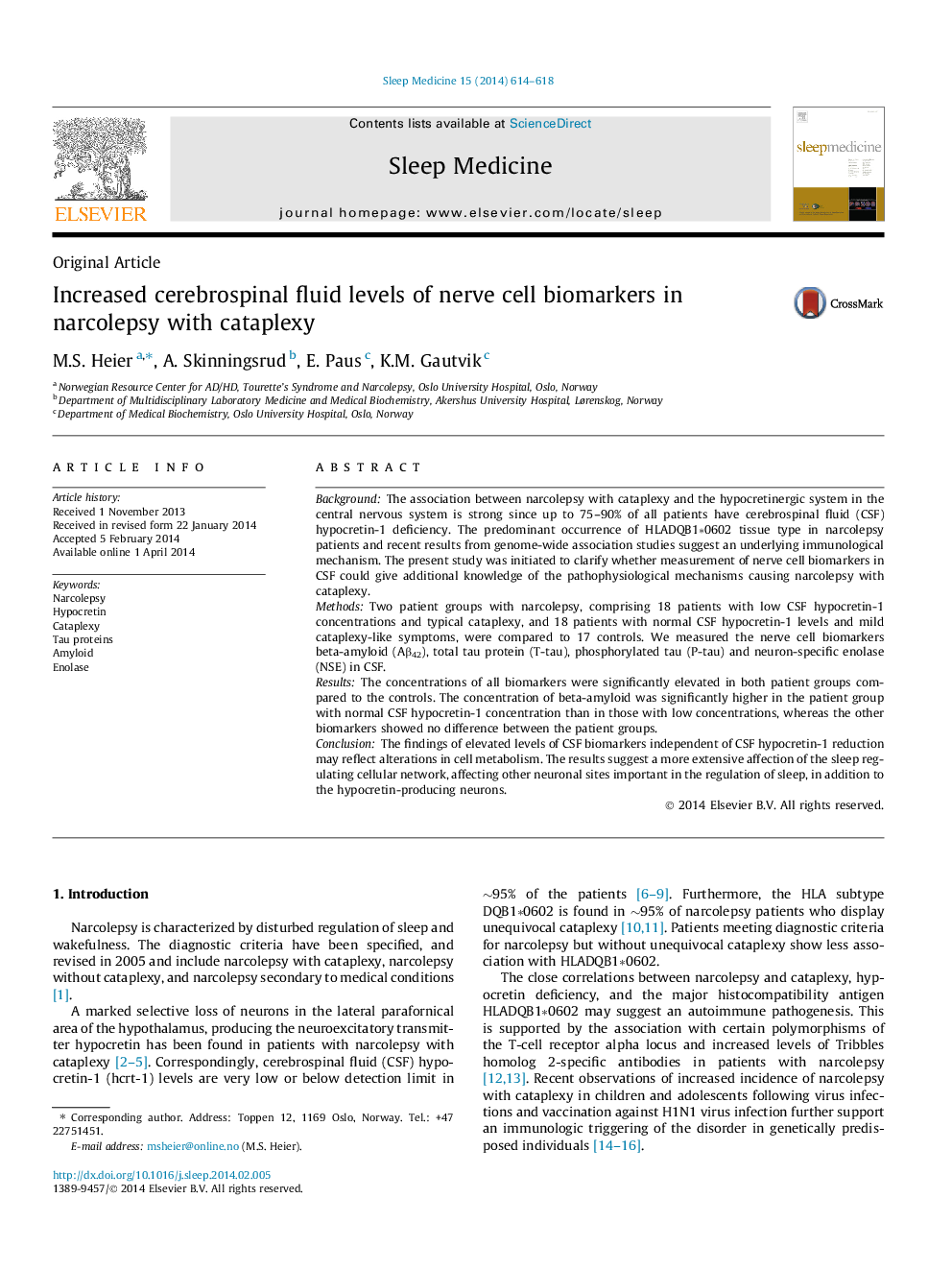| Article ID | Journal | Published Year | Pages | File Type |
|---|---|---|---|---|
| 3176112 | Sleep Medicine | 2014 | 5 Pages |
BackgroundThe association between narcolepsy with cataplexy and the hypocretinergic system in the central nervous system is strong since up to 75–90% of all patients have cerebrospinal fluid (CSF) hypocretin-1 deficiency. The predominant occurrence of HLADQB1*0602 tissue type in narcolepsy patients and recent results from genome-wide association studies suggest an underlying immunological mechanism. The present study was initiated to clarify whether measurement of nerve cell biomarkers in CSF could give additional knowledge of the pathophysiological mechanisms causing narcolepsy with cataplexy.MethodsTwo patient groups with narcolepsy, comprising 18 patients with low CSF hypocretin-1 concentrations and typical cataplexy, and 18 patients with normal CSF hypocretin-1 levels and mild cataplexy-like symptoms, were compared to 17 controls. We measured the nerve cell biomarkers beta-amyloid (Aβ42), total tau protein (T-tau), phosphorylated tau (P-tau) and neuron-specific enolase (NSE) in CSF.ResultsThe concentrations of all biomarkers were significantly elevated in both patient groups compared to the controls. The concentration of beta-amyloid was significantly higher in the patient group with normal CSF hypocretin-1 concentration than in those with low concentrations, whereas the other biomarkers showed no difference between the patient groups.ConclusionThe findings of elevated levels of CSF biomarkers independent of CSF hypocretin-1 reduction may reflect alterations in cell metabolism. The results suggest a more extensive affection of the sleep regulating cellular network, affecting other neuronal sites important in the regulation of sleep, in addition to the hypocretin-producing neurons.
